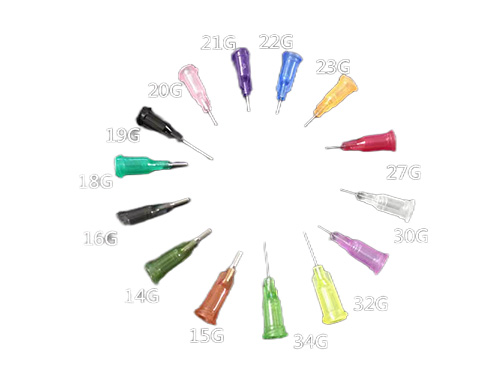Application Prospects of Seed Tray Seeders in Vertical Farming
2025-01-03 22:27:35
As modern agriculture moves toward sustainability and automation, vertical farming is gradually becoming a highly efficient and eco-friendly agricultural model. Vertical farming maximizes planting areas by using vertical space while reducing water consumption and land use. As a crucial component of vertical farming, seed tray seeders play an indispensable role in this field. This article will explore the application prospects, advantages, technical challenges, and future development trends of seed tray seeders in vertical farming.
What is Vertical Farming?
Vertical farming is an agricultural model where crops are grown in vertical spaces rather than horizontal rows. Unlike traditional horizontal farming, vertical farming utilizes multi-level building structures and three-dimensional spaces, significantly increasing planting density, reducing land occupation, and achieving resource recycling and sustainable production to some extent.
In vertical farming, processes such as seeding, seedling raising, irrigation, and fertilization often use automated equipment to improve efficiency, reduce costs, and ensure healthy crop growth.
The Core Role of Seed Tray Seeders in Vertical Farming
1. Efficient Seeding and Automated Production
In vertical farming, space layouts are compact, requiring efficient and automated seeding equipment. Seed tray seeders can achieve automated and rapid seeding, filling and planting large numbers of seed trays every hour, saving significant time and labor.
Automated seeding technology ensures precise control of seeding density and depth, which helps improve crop germination rates and uniformity.
2. Saving Space and Resources
Vertical farming spaces are limited, so more efficient seeding and seedling layouts are needed. Seed tray seeders can achieve compact layouts while minimizing seed waste during the seeding process.
The automated system can accurately arrange seeding density and spacing based on the distribution of seed trays and seed requirements, maximizing space and resource utilization.
3. Enhancing Crop Health and Disease Resistance
Precise control of seeding density and depth helps crops absorb water and nutrients more efficiently, strengthening roots and leaves.
Seed tray seeders ensure each plant is evenly distributed within the seed tray, reducing the risk of disease transmission and enhancing resistance, thereby decreasing crop losses from diseases.
Specific Requirements for Seed Tray Seeders in Vertical Farming
1. Compact and Efficient Equipment Design
Due to the limited space in vertical farming, the size and design of the equipment need to meet higher requirements.
Seed tray seeders should adopt a compact design to fit narrow vertical spaces. Additionally, the equipment should have high seeding efficiency to meet high-density seeding requirements.
2. Automation and Intelligent Control Systems
Vertical farming requires higher levels of automation. Seed tray seeders should be equipped with advanced intelligent control systems, capable of remote monitoring, data analysis, and automatic adjustment of seeding parameters.
For example, intelligent control systems can automatically adjust seeding density and spacing based on environmental data (e.g., temperature, humidity, light), optimizing crop growing conditions.
3. Durability and Anti-Pollution Characteristics
In vertical farming, the dense irrigation and nutrient recycling systems require seeding equipment to have high anti-pollution and durability characteristics.
The materials and structures of the equipment should be made from high-quality, corrosion-resistant, anti-pollution, and easy-to-clean materials, ensuring stability and longevity for long-term use.
Technical Challenges and Solutions
1. Space Layout and Equipment Installation Complexity
In vertical farming, equipment installation and spatial layout are complex and require customized designs.
Solution: Utilize modular designs and detachable structures, allowing the seeding equipment to be adjusted and installed according to the actual vertical space.
2. Automation Technology and Fault Maintenance
Highly automated equipment may encounter faults during use, such as sensor failures and mechanical component wear.
Solution: Collaborate with technology suppliers to provide professional after-sales services and technical support, establishing remote monitoring and repair systems to minimize downtime caused by equipment faults.
3. Cost and Equipment Investment
Automated and intelligent seeding equipment has higher costs, especially for farm owners introducing vertical farming technology for the first time.
Solution: Promote shared cooperation models, allowing farms to rent shared equipment. Additionally, offer customized financing and installment purchase plans to reduce initial investment costs.
Future Development Trends
1. Intelligent Data Analysis and Precision Seeding Technology
In the future, seed tray seeders will integrate more powerful data analysis and artificial intelligence technologies.
Through real-time monitoring, data analysis, and intelligent decision-making, more precise seeding parameter adjustments can be achieved, enhancing crop germination rates and yields.
2. Integration of Renewable Energy and Energy-Saving Technologies
Future seed planters will increasingly adopt renewable energy technologies such as solar panels and energy-efficient batteries.
This trend not only helps reduce energy costs but also aligns with sustainable development and environmental protection goals.
3. Eco-Friendly Materials and Recyclable Design
In the design of vertical farming equipment, more eco-friendly and recyclable materials will be used, reducing waste and pollution.
Recyclable designs and eco-friendly materials not only lower production costs but also enhance the sustainability of the equipment.
Conclusion
Seed tray seeders have vast application prospects in vertical farming. They not only improve seeding efficiency and reduce labor costs but also play a crucial role in space utilization, resource recycling, and crop health.
As technology continues to advance and market demand grows, future seed tray seeders will become more intelligent, eco-friendly, and sustainable.
If you are seeking an efficient, customized seed tray seeder solution, please contact us. We offer professional equipment customization and technical support, helping you achieve higher yields, smarter operations, and more sustainable and modernized goals in vertical farming production.

It adopts electrical integration and can be started by pressing the fully automatic button ...

The XP750 seeder has stable performance, excellent product quality, simple and convenient o...

It adopts electrical integration and can be started by pressing the fully automatic button ...

Needle list Seed nozzle model Different models Sowing types are different...



